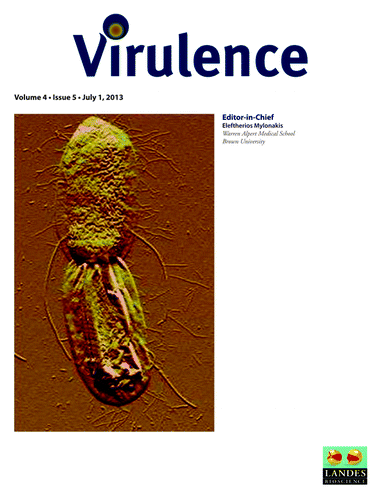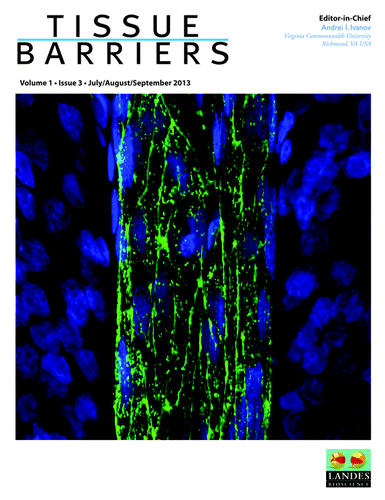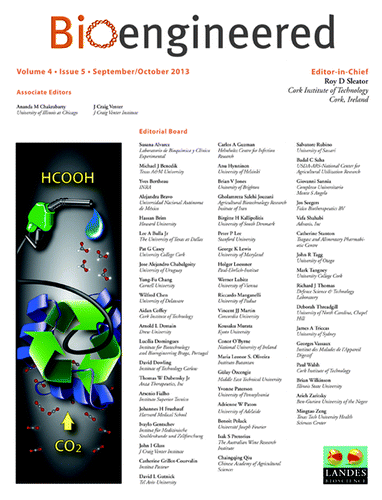Shiga toxin-producing Escherichia coli
Shiga toxin-producing Escherichia coli (STEC) cause hemorrhagic colitis (HC) and hemolytic uremic syndrome (HUS) in humans. Outbreaks are linked to bovine food sources. While STEC O157:H7 has been responsible for the most severe outbreaks worldwide, non-O157 serotypes have emerged as important enteric pathogens in several countries. The main virulence factor of STEC is the production of Shiga toxins 1 and 2. Additional virulence markers include plasmid-encoded enterohemolysin (ehxA), autoagglutinating adhesin (Saa), catalase-peroxidase (katP), extracellular serine protease (espP), zinc metalloprotease (stcE) and subtilase cytotoxin (subAB). Other virulence factors are intimin and adhesins, which play a role in the adherence of STEC to bovine colon. A novel review by Drs Etcheverría and Padola focuses on the virulence traits of STEC and especially on those related to the adhesion to bovine colon. Better understanding of the interaction between STEC and its bovine host is crucial for developing strategies to control cattle colonization which in turn will help to reduce the transmission to human ().Citation1
Hyperimmune bovine colostrum for treating GI infections
Hyperimmune bovine colostrum (HBC), produced by vaccination of a cow during gestation, is rich in targeted immunoglobulins, and can be used to treat a variety of diseases. The published history of HBC used for treating gastrointestinal (GI) infections in humans has developed over the past several decades and demonstrates the promise of this type of therapeutic for GI infectious disease. As described in a recent Review by Dr Saul Tzipori and coworkers, HBC, or purified derivative products, have been used successfully for treatment or prevention of cryptosporidiosis, shigellosis, rotavirus, enterotoxigenic E. coli and C. difficile infection (CDI). Given the positive results of previous studies using HBC for treatment of CDI, the authors have produced HBC with antibodies against the two most important virulence factors of C. difficile, TcdA and TcdB, using a novel recombinant vaccine. Preliminary results demonstrated efficacy of the HBC product for treatment of CDI in the gnotobiotic piglet model and warrant more thorough investigation. The authors suggest that HBC could provide an effective treatment alternative to antibiotics, sparing the normal gut microflora and reducing rates of recurrence and antibiotic resistance ().Citation2
Claudins in intestinal health and diseases
Intestines are organs that not only digest food and absorb nutrients but also provide a defense barrier against pathogens and noxious agents ingested. Tight junctions (TJs) are the most apical component of the junctional complex, providing one form of cell-cell adhesion in enterocytes and playing a critical role in regulating paracellular barrier permeability. Alteration of TJs leads to a number of pathophysiological diseases causing malabsorption of nutrition and intestinal structure disruption, which may even contribute to systemic organ failure. Claudins are the major structural and functional components of TJs with at least 24 members in mammals. Claudins have distinct charge-selectivity, either by tightening the paracellular pathway or functioning as paracellular channels, regulating ions and small molecules passing through the paracellular pathway. In a recent review, Dr Yan-Hua Chen and colleagues discuss the functions of claudin family members, their distribution and localization in the intestinal tract of mammals, and their alterations in intestine-related diseases such IBD and colorectal cancer. They also look at the effect of bacteria and viruses on claudin-mediated intestinal functions. Finally, the authors present a number of molecules and chemicals that have been found to improve the intestinal barrier and ameliorate the alteration of claudins in pathological status, and thus may be used to treat the intestinal barrier dysfunction ().Citation3
Bifidobacterial MCRA-like protein is an oleate hydratase
Bifidobacteria are common commensals of the mammalian gastrointestinal tract. They have been shown to convert oleic acid (OA)—a mono-unsaturated fatty acid that occurs naturally in vegetable oils and is reported to confer a range of health benefits—to 10-hydroxystearic acid (10-HSA). Previous studies have suggested that a bifidobacterial myosin cross reactive antigen (MCRA) protein plays a role in bacterial stress tolerance, while this protein has also been linked to the biosynthesis of conjugated linoleic acid (CLA) in bifidobacteria. In order to increase the current understanding on the role of MCRA in bifidobacteria, Dr Douwe van Sinderen and colleagues created and analyzed an insertion mutant of the MCRA-encoding gene of Bifidobacterium breve NCFB 2258. They demonstrated that the MCRA protein from B. breve NCFB 2258 is an oleate hydratase, which is responsible for the breakdown of OA to 10-HSA. Furthermore, study results suggest a role for the MCRA protein in stress tolerance in bifidobacteria. In contrast to findings from Lactobacilli, the MCRA protein of B. breve was not found to be involved in CLA production, suggesting that bifidobacteria follow a different biochemical route to achieve linoleic acid to CLA conversion. Thus, the metabolic pathway of CLA production in bifidobacteria remains to be elucidated ().Citation4
References
- Etcheverría AI, Padola NL. Shiga toxin-producing Escherichia coli: Factors involved in virulence and cattle colonization. Virulence 2013; 4:366 - 72; http://dx.doi.org/10.4161/viru.24642; PMID: 23624795
- Steele J, Sponseller J, Schmidt D, Cohen O, Tzipori S. Hyperimmune bovine colostrum for treatment of GI infections: A review and update on Clostridium difficile. Hum Vaccin Immunother 2013; 9:1565 - 8; http://dx.doi.org/10.4161/hv.24078; PMID: 23435084
- Lu Z, Ding L, Lu Q, Chen Y. Claudins in intestines: Distribution and functional significance in health and diseases. Tissue Barriers 2013; 1:e24978; http://dx.doi.org/10.4161/tisb.24978
- O’Connell KJ, Motherway MO, Hennessey AA, Brodhun F, Ross RP, Feussner I, Stanton C, Fitzgerald GF, van Sinderen D. Identification and characterization of an oleate hydratase-encoding gene from Bifidobacterium breve. Bioengineered 2013; 4; Forthcoming http://dx.doi.org/10.4161/bioe.24159; PMID: 23851389



